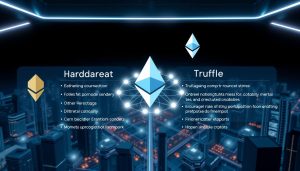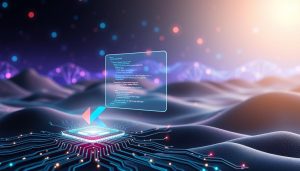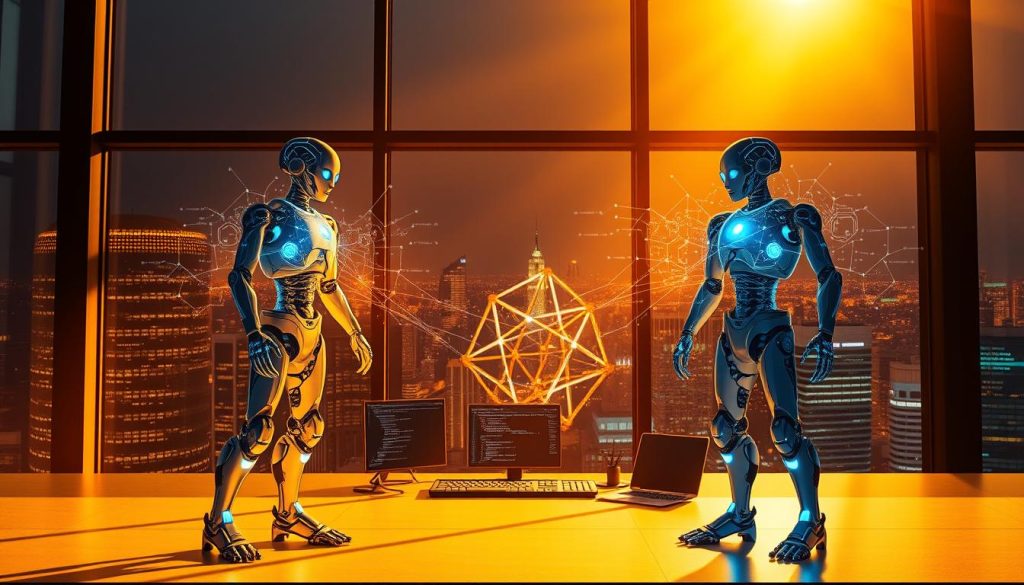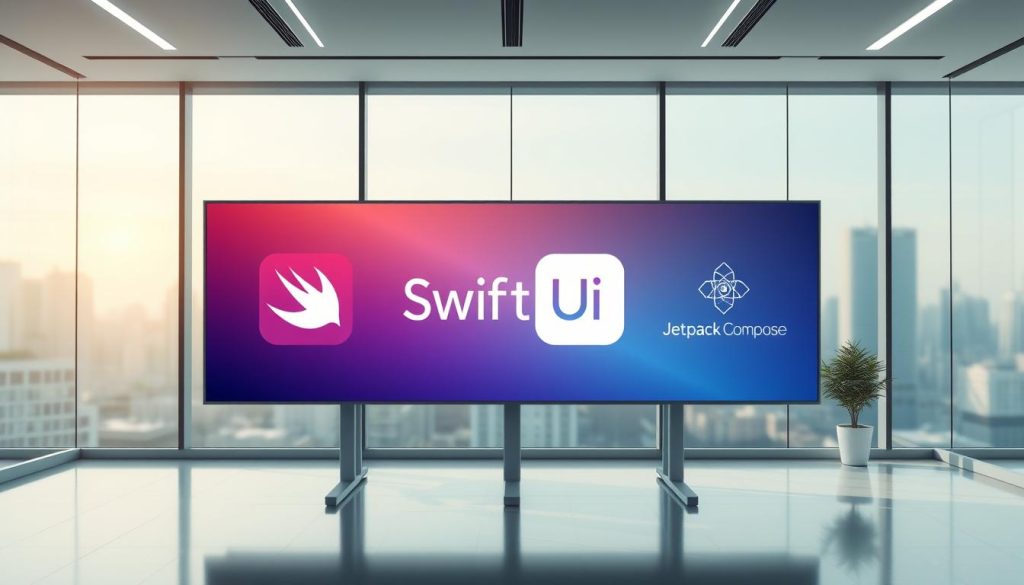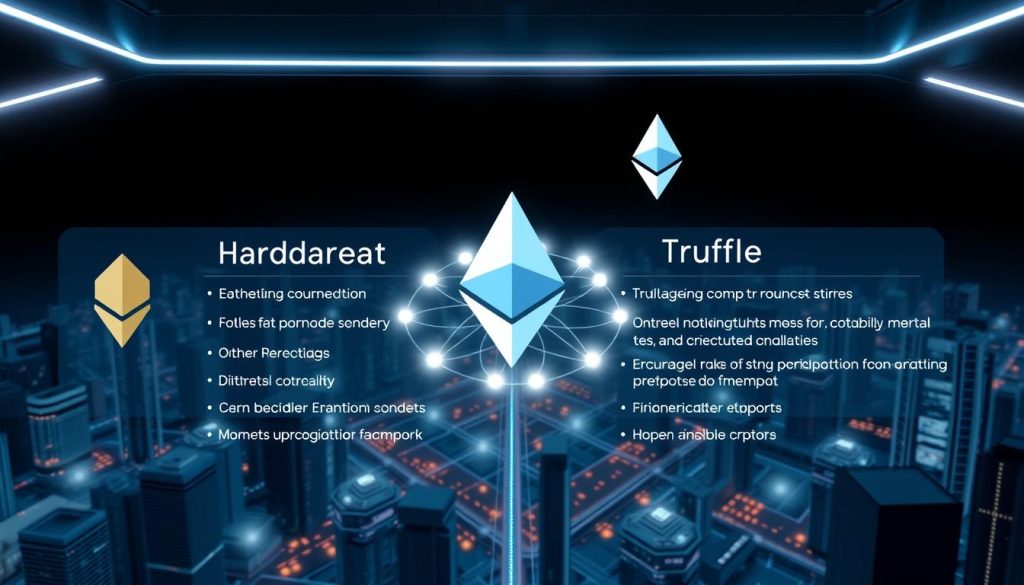Is Python Dying in 2025? The Truth About Its Future
The programming world is abuzz with questions about the future of Python programming. As one of the most popular coding languages, Python’s relevance in the ever-evolving tech landscape is a topic of much debate.
With the rise of new coding trends, some wonder if Python is losing its grip. However, its simplicity, flexibility, and extensive libraries continue to make it a favorite among developers.

As we approach 2025, it’s essential to examine the current status of Python and its potential trajectory. Will it continue to thrive, or are there challenges on the horizon?
Key Takeaways
- Python remains a popular choice among developers due to its simplicity and flexibility.
- Coding trends are evolving, but Python’s extensive libraries keep it relevant.
- The future of Python programming looks promising, with ongoing support and updates.
- Developers continue to favor Python for its ease of use and versatility.
- Python’s adaptability ensures its continued relevance in the tech landscape.
The Current State of Python in 2024
Python’s current state in 2024 reveals a lot about its popularity and industry trends. As a widely used programming language, Python continues to be a favorite among developers and industries alike.
To understand Python’s standing, let’s look at some key statistics. Python’s Market Share and Popularity Statistics show that it remains one of the top programming languages globally.
Python’s Market Share and Popularity Statistics
Recent surveys indicate that Python holds a significant share in the programming landscape. According to the TIOBE Index, Python has consistently ranked among the top three programming languages. Its popularity can be attributed to its simplicity, flexibility, and the vast number of libraries available.
Key Industries Relying on Python Today
Several key industries heavily rely on Python for various applications. These include:
- Data Science and Machine Learning: Python is extensively used for data analysis, machine learning, and AI due to libraries like TensorFlow and scikit-learn.
- Web Development: Frameworks like Django and Flask make Python a popular choice for web development.
- Scientific Computing: Python is used in scientific computing for tasks such as data analysis and numerical simulations.
- Automation: Python scripts are used for automating repetitive tasks in various industries.
These industries continue to drive Python’s popularity, ensuring its relevance in the current technological landscape.
Python’s Historical Growth Trajectory
Tracing Python’s history reveals a narrative of continuous improvement and expanding influence. Python, created in the late 1980s by Guido van Rossum, was first released in 1991. Since then, it has undergone significant transformations, shaped by the needs of its growing user community.
The Rise from Obscurity to Dominance
Initially, Python was not widely known outside a small group of developers. However, its simplicity, readability, and versatility soon made it a favorite among programmers. The Python Software Foundation was established in 2001 to support the language’s development and promote its use.
Critical Milestones in Python’s Development
Key milestones include the release of Python 2.0 in 2000, which introduced significant improvements such as garbage collection and Unicode support. Python 3.0, released in 2008, marked a major shift towards a more consistent and modern language, although it broke backward compatibility.
| Version | Release Year | Notable Features |
|---|---|---|
| Python 2.0 | 2000 | Garbage collection, Unicode support |
| Python 3.0 | 2008 | Improved syntax, removal of deprecated features |
Is Python Dying in 2025? The Truth About Its Future
Python’s fate in the rapidly evolving tech landscape is a subject of intense debate as we near 2025. The programming community is rife with discussions about the viability of Python, a language that has been a cornerstone of development for decades.
Origin of the Concern
The concerns about Python’s future can be attributed to several factors, including the rise of new programming languages and the evolving needs of the tech industry. New languages like Rust and Go are gaining popularity due to their performance and concurrency features, potentially threatening Python’s dominance.
Recent articles and discussions have highlighted Python’s perceived shortcomings, such as its speed limitations compared to compiled languages and its memory usage concerns. However, it’s essential to separate the facts from speculation.
Separating Facts from Speculation
While it’s true that Python faces challenges, it’s also important to acknowledge its enduring strengths. Python’s readability and ease of learning make it a favorite among beginners and experienced developers alike.
| Language | Popularity Index | Primary Use Cases |
|---|---|---|
| Python | High | Data Science, AI, Web Development |
| Rust | Rising | Systems Programming, Embedded Systems |
| Go | Moderate | Cloud Infrastructure, Networking |
The table above illustrates Python’s strong position in the programming landscape, alongside emerging competitors. Despite the rise of new languages, Python’s vast ecosystem of libraries and frameworks, coupled with its community support, ensures its continued relevance.
In conclusion, while there are valid concerns about Python’s future, they are largely speculative. Python’s strengths and the ongoing efforts to address its weaknesses suggest that it will remain a vital part of the programming world in 2025 and beyond.
Python’s Performance Challenges
Despite its popularity, Python faces several performance challenges that need to be addressed. These challenges are critical in understanding the limitations of Python and how they impact its usage in various applications.
Speed Limitations Compared to Compiled Languages
One of the primary performance challenges Python faces is its speed compared to compiled languages like C++ or Java. Python is an interpreted language, meaning that the code is executed line by line at runtime, which can lead to slower execution speeds. This is particularly problematic for applications that require high-speed processing, such as real-time data processing or complex scientific simulations.
Memory Usage Concerns
Another challenge Python developers encounter is memory usage. Python’s dynamic typing and memory management can lead to higher memory consumption, especially when dealing with large datasets. This can be a significant issue in environments where memory is limited or when working with big data.
The GIL Controversy
The Global Interpreter Lock (GIL) is a mechanism used in CPython (the standard implementation of Python) to synchronize access to Python objects, preventing multiple threads from executing Python bytecodes at once. While this simplifies the implementation of CPython and makes it thread-safe, it also means that true parallel execution of threads is not possible in standard Python, limiting its utility in multi-threaded applications.
Some potential solutions to these challenges include using Just-In-Time (JIT) compilers like PyPy, which can significantly improve execution speed, or leveraging libraries and frameworks that release the GIL, allowing for better parallelism. For instance, libraries like NumPy and Pandas are designed to release the GIL for certain operations, enabling more efficient multi-threaded processing.
Emerging Competitors in the Programming Landscape
The programming landscape is witnessing a surge in new languages that are challenging Python’s dominance. As technology evolves, new requirements and challenges are being addressed by emerging programming languages.
Rust, Go, and Julia: The New Challengers
Languages like Rust, Go, and Julia are gaining popularity due to their performance and efficiency. Rust is known for its memory safety features, making it a favorite for systems programming. Go, on the other hand, is praised for its simplicity and concurrency support, which is ideal for cloud and network programming.
Julia is another language that’s gaining traction, particularly in the data science community, due to its high performance and dynamism. These languages are attracting developers who are looking for alternatives to Python for specific tasks.
| Language | Key Feature | Primary Use Case |
|---|---|---|
| Rust | Memory Safety | Systems Programming |
| Go | Concurrency Support | Cloud and Network Programming |
| Julia | High Performance | Data Science |
JavaScript’s Expanding Domain
JavaScript continues to expand its reach beyond web development into areas like mobile and desktop application development, and even server-side programming with technologies like Node.js. Its versatility and ubiquity make it a significant competitor to Python in various domains.
“JavaScript is everywhere, and its ecosystem is vast and diverse, making it a compelling choice for developers across different disciplines.”
Language-Specific Advantages Over Python
While Python excels in many areas, the emerging languages offer specific advantages. For instance, Rust’s memory safety features and Go’s concurrency model provide significant benefits in certain applications. Julia’s performance is particularly noteworthy in numerical and scientific computing.
In conclusion, while Python remains a powerful and popular language, emerging competitors are challenging its dominance in various niches. Understanding these new languages and their advantages is crucial for developers looking to stay ahead in the rapidly evolving programming landscape.
Python’s Enduring Strengths
Despite concerns about its future, Python boasts several enduring strengths that solidify its position in the programming world. These advantages not only contribute to its widespread adoption but also ensure its continued relevance in the ever-evolving tech landscape.
Readability and Ease of Learning
One of Python’s most significant advantages is its readability. The language is designed to be easy to understand, with a syntax that closely resembles the English language. This makes it an ideal language for beginners. As Guido van Rossum, the creator of Python, once said, “I think it’s a wonderful language, and I’ve always tried to make it more so.”
“The best thing about Python is that it’s still evolving, and the community is very active.”
This ease of learning is a crucial factor in Python’s popularity, as it allows new developers to quickly become proficient.
Vast Ecosystem of Libraries and Frameworks
Python’s ecosystem is another significant strength. The language boasts a vast collection of libraries and frameworks that cater to various needs, from web development to data science. For instance, frameworks like Django and Flask simplify web development, while libraries such as NumPy and pandas are indispensable for data analysis. This extensive ecosystem is a testament to Python’s versatility.
| Library/Framework | Use Case |
|---|---|
| Django | High-level web framework for rapid development |
| NumPy | Numerical computing and data analysis |
| Flask | Micro web framework for building web applications |
Community Support and Documentation
Python’s community is renowned for its supportiveness and extensive documentation. The official Python documentation is comprehensive, making it easier for developers to learn and troubleshoot. Moreover, the community contributes to a wealth of resources, including tutorials, forums, and open-source projects.

The active community ensures that Python continues to evolve and improve.
In conclusion, Python’s strengths, including its readability, vast ecosystem, and strong community support, position it well for continued success. These advantages not only make Python a favorite among developers but also ensure its relevance in the programming landscape.
Python in Data Science and AI: Irreplaceable or Vulnerable?
In the realm of data science and AI, Python has established itself as a leading language, but its future is not without challenges. Python’s simplicity, flexibility, and extensive libraries have made it a favorite among data scientists and AI researchers.
Current Dominance in Machine Learning
Python’s dominance in machine learning is largely due to its extensive libraries, including TensorFlow, Keras, and scikit-learn. These libraries provide efficient implementations of key algorithms, making it easier for developers to build and deploy machine learning models.
Python’s Role in Big Data Processing
Python plays a crucial role in big data processing, thanks to libraries like Pandas, NumPy, and PySpark. These tools enable efficient data manipulation, analysis, and processing, making Python an indispensable tool in the big data ecosystem.
| Library | Functionality | Usage |
|---|---|---|
| Pandas | Data Manipulation | Data Cleaning, Analysis |
| NumPy | Numerical Computing | Scientific Computing, Data Analysis |
| PySpark | Big Data Processing | Distributed Computing, Data Processing |
Potential Disruptors in the AI Space
Despite Python’s current dominance, there are potential disruptors in the AI space. New languages like Julia are gaining traction due to their performance advantages. Additionally, advancements in automated machine learning (AutoML) tools could potentially reduce the need for manual coding in Python.
The future of Python in data science and AI will depend on its ability to adapt to emerging trends and technologies. While there are challenges on the horizon, Python’s strong community and continuous evolution make it well-positioned to remain a key player.
Python’s Evolution: Recent and Upcoming Changes
Python’s ongoing development is marked by efforts to address historical criticisms and improve performance. The language continues to be a favorite among developers and data scientists alike, thanks to its simplicity and the extensive libraries available.
Recent versions of Python have shown significant improvements in performance. Python 3.11 and 3.12 have brought notable enhancements, making the language more efficient and capable.
Python 3.11 and 3.12 Performance Improvements
Python 3.11 introduced several optimizations that improved performance, including a faster startup time and better execution speed. Python 3.12 continues this trend with further optimizations, making Python more competitive with other languages in terms of performance.

The Road to Python 4.0
While Python 4.0 is still on the horizon, the development community is actively discussing and planning the features and improvements that this major release will bring. The transition to Python 4.0 is expected to be a significant milestone, potentially introducing breaking changes and new features that will further enhance the language.
Addressing Legacy Criticisms
Python has historically faced criticisms regarding its performance and certain design choices, such as the Global Interpreter Lock (GIL). Recent and upcoming changes aim to address these issues, making Python more robust and efficient. For instance, efforts to improve the GIL or provide alternatives are underway, which could significantly impact Python’s future viability.
By addressing these legacy criticisms and continuing to improve performance, Python is likely to remain a vital and relevant programming language for years to come.
How Python Is Adapting to Survive
The programming world is constantly shifting, and Python is adapting to stay relevant. As new challenges and opportunities arise, Python’s developers are focusing on several key areas to ensure its continued success.
Performance Optimization Initiatives
One of the primary ways Python is adapting is through performance optimization initiatives. Recent versions, such as Python 3.11 and 3.12, have shown significant improvements in execution speed. These enhancements are crucial for maintaining Python’s competitiveness, especially in data-intensive applications.
Integration with Faster Languages
Python is also adapting by integrating with faster languages like C++ and Rust. This allows developers to leverage the strengths of these languages while still using Python for high-level programming. Tools like Cython and PyPy facilitate this integration, enabling more efficient execution of critical code segments.
Cloud and Containerization Support
Furthermore, Python’s adaptation includes enhanced cloud and containerization support. The language is widely used in cloud computing environments, and its compatibility with containerization tools like Docker has streamlined deployment processes. This support is vital for modern development workflows, which increasingly rely on scalable and portable architectures.
Career Implications: Should You Still Learn Python?
With the programming landscape constantly evolving, it’s essential to assess whether learning Python remains a viable career move. Python’s popularity has been a significant factor in its widespread adoption across various industries.
Short-term Job Market Outlook
The current job market indicates a strong demand for Python developers, particularly in data science and machine learning. Python skills are highly sought after, with many companies looking for professionals who can leverage Python for data analysis, AI, and automation.
Long-term Career Investment Value
Investing in Python skills can yield long-term benefits. Python’s simplicity and versatility make it an excellent language for beginners and experienced developers alike. Its extensive libraries and frameworks ensure that Python remains relevant in emerging technologies.
Complementary Skills for Python Developers
To maximize their career potential, Python developers can complement their skills with knowledge in areas like data visualization, cloud computing, or cybersecurity. This diversified skill set can significantly enhance job prospects and career growth.
Conclusion: The Verdict on Python’s Future
Python’s future looks bright, despite concerns about its potential decline. The analysis presented in this article reveals that Python remains a dominant force in the programming world, driven by its simplicity, versatility, and extensive libraries.
The coding trends indicate a continued demand for Python developers, particularly in data science and AI. While emerging competitors like Rust, Go, and Julia are gaining traction, Python’s vast ecosystem and community support ensure its continued relevance.
As the programming landscape evolves, Python is adapting to survive, with ongoing performance optimization initiatives and integration with faster languages. For developers, learning Python remains a valuable investment, offering a wide range of career opportunities in the United States and beyond.
In conclusion, Python is not dying in 2025; instead, it continues to thrive, driven by its enduring strengths and the growing demand for data-driven technologies. As coding trends continue to shift, Python’s future remains secure, making it an attractive choice for developers and organizations alike.
FAQ
Is Python still a viable programming language to learn in 2025?
Yes, Python remains a highly relevant and in-demand skill in the job market, with its simplicity, flexibility, and vast ecosystem of libraries making it an attractive choice for developers and organizations alike.
What are the main performance challenges facing Python?
Python’s performance challenges include speed limitations compared to compiled languages, memory usage concerns, and the controversy surrounding the Global Interpreter Lock (GIL), which can impact its performance in certain applications.
How is Python adapting to emerging competitors like Rust, Go, and Julia?
Python is evolving to stay relevant by focusing on its strengths, such as its vast ecosystem of libraries and frameworks, and by addressing its weaknesses through performance optimization initiatives, integrations with faster languages, and support for cloud and containerization.
What role does Python play in data science and AI, and is it irreplaceable?
Python currently dominates the machine learning and big data processing landscape, thanks to its simplicity, flexibility, and extensive libraries, making it a crucial tool for data scientists and AI practitioners, although potential disruptors in the AI space could impact its role in the future.
What are the career implications of learning Python, and is it a good investment?
Learning Python is a valuable investment for developers, as it remains a highly sought-after skill in the job market, with a strong demand for Python developers in various industries, and can lead to a rewarding and challenging career in data science, AI, and other fields.
What recent changes has Python undergone, and what can we expect in the future?
Python has undergone significant improvements in recent versions, such as Python 3.11 and 3.12, which have addressed performance concerns, and the development roadmap for Python 4.0 is underway, promising further enhancements and refinements to the language.
How does Python’s community and documentation contribute to its success?
Python’s strong community support and extensive documentation are key factors in its success, providing developers with a wealth of resources, libraries, and frameworks, and helping to ensure that the language continues to evolve and improve.
Can Python be used for large-scale and complex applications?
Yes, Python can be used for large-scale and complex applications, thanks to its flexibility, scalability, and the availability of various frameworks and libraries that support complex development projects.





